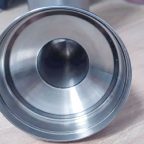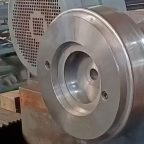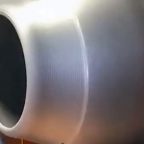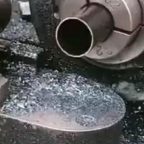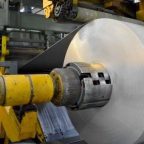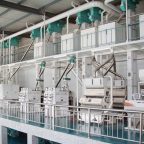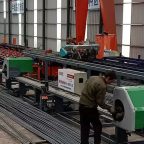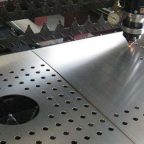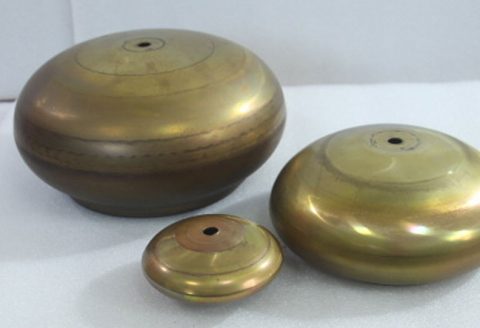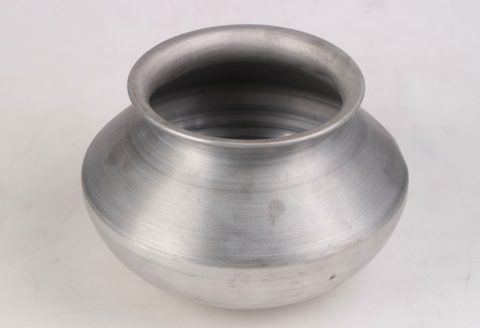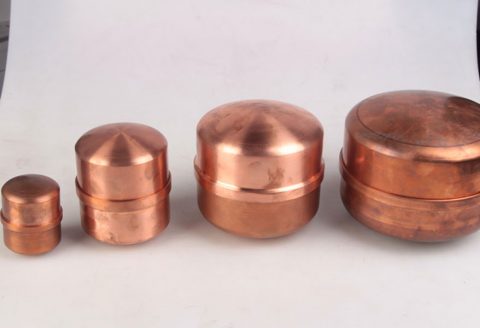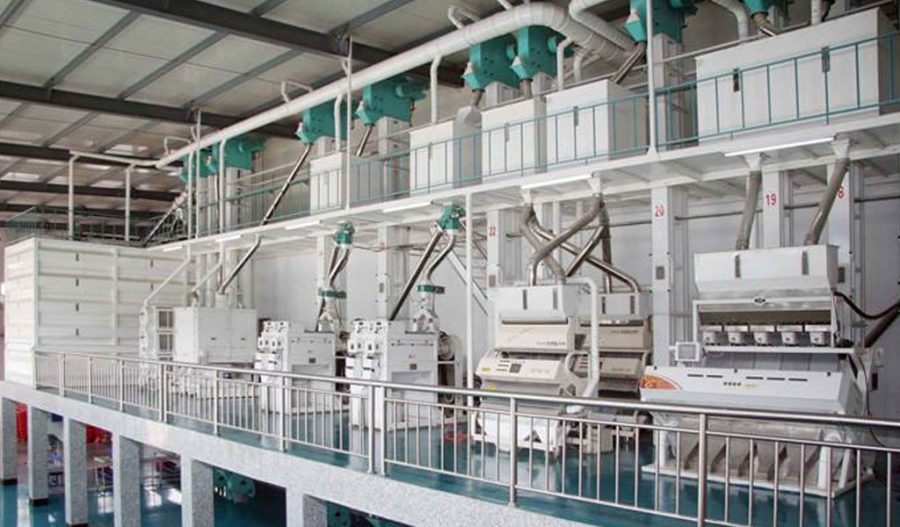
Titanium alloys, renowned for their exceptional strength-to-weight ratio, corrosion resistance, and high-temperature performance, have become indispensable in the aerospace industry, particularly for deep space exploration structures. Super-large titanium alloy components, such as those used in spacecraft bulkheads, fuel tanks, and structural frames, are critical for ensuring the reliability and safety of missions operating in extreme environments. The spinning process, a specialized metal-forming technique, is widely employed to fabricate these large-scale, axisymmetric components due to its ability to produce seamless, lightweight structures with high precision. However, the spinning of super-large titanium alloys is fraught with challenges, primarily due to the formation of defects that compromise structural integrity. These defects, ranging from surface cracks to internal voids, arise from complex interactions between material properties, process parameters, and environmental conditions. Understanding the formation mechanisms of these defects and developing effective control strategies are paramount to advancing the manufacturability and performance of titanium alloy components for deep space applications.
This article provides a comprehensive examination of the defect formation mechanisms in the spinning of super-large titanium alloys, with a focus on their implications for deep space exploration structures. It explores the metallurgical, mechanical, and process-related factors contributing to defect formation, followed by detailed control strategies to mitigate these issues. The discussion is supported by comparative tables that summarize key parameters, defect types, and mitigation techniques, drawing on the latest research and industrial practices. The article aims to serve as a definitive resource for researchers, engineers, and policymakers involved in the design and production of advanced aerospace components.
Metallurgical Characteristics of Titanium Alloys in Spinning
Titanium alloys, particularly α+β alloys like Ti-6Al-4V (TC4) and near-β alloys such as Ti-3Al-8V-6Cr-4Mo-4Zr (Beta-C), are favored for their high specific strength, excellent corrosion resistance, and ability to withstand extreme temperatures encountered in deep space environments. These alloys exhibit a hexagonal close-packed (HCP) α-phase, a body-centered cubic (BCC) β-phase, or a combination of both, depending on composition and processing conditions. The phase composition significantly influences the material’s response to deformation during spinning.
Crystal Structure and Phase Transformations
The HCP α-phase in titanium alloys is characterized by limited slip systems, which restricts plastic deformation and increases the likelihood of defect formation under high strain. The BCC β-phase, conversely, offers more slip systems, enhancing ductility but potentially leading to phase instabilities during rapid cooling or high strain rates. During spinning, the material undergoes significant plastic deformation, which can induce phase transformations, such as the formation of α’-martensite or ω-Ti phases, particularly under high cooling rates or thermal gradients. These transformations can introduce micro-defects, such as twins or dislocation pile-ups, that serve as precursors to larger-scale defects like cracks or voids.
Alloying Elements and Their Effects
Alloying elements, such as aluminum (Al), vanadium (V), molybdenum (Mo), and niobium (Nb), play a critical role in stabilizing the α or β phases and influencing defect formation. For instance, Al strengthens the α-phase but can reduce ductility, increasing the propensity for surface cracking. β-stabilizing elements like Mo and V enhance deformability but may lead to segregation defects, known as β-flecks, during rapid solidification or improper heat treatment. Interstitial elements, such as oxygen (O) and nitrogen (N), further complicate defect formation by increasing lattice strain and promoting the formation of hard, brittle phases like α-case.
Microstructural Features
The microstructure of titanium alloys, including grain size, phase distribution, and texture, significantly affects their spinning behavior. Coarse lamellar α-structures, often present in as-cast or forged titanium alloys, are prone to localized strain concentrations during spinning, leading to defects like micro-cracks or shear bands. Fine, equiaxed α-grains, achieved through processes like hot isostatic pressing (HIP) or severe plastic deformation, improve deformability but may still develop defects under non-optimal spinning conditions. The presence of prior β-grain boundaries can also act as sites for defect nucleation, particularly in super-large components where thermal gradients are pronounced.
Spinning Process for Super-Large Titanium Alloys
Spinning is a metal-forming process that involves rotating a metal blank or preform at high speed while applying localized pressure with a tool to shape it into an axisymmetric component. For super-large titanium alloy structures, such as those exceeding 2 meters in diameter, the process is typically conducted at elevated temperatures (hot spinning) to enhance material ductility and reduce forming forces. The process can be categorized into conventional spinning, shear spinning, and power spinning, each with distinct implications for defect formation.
Hot Spinning Mechanics
Hot spinning of titanium alloys is typically performed in the α+β phase region (800–950°C for Ti-6Al-4V) to balance ductility and strength. The process involves complex interactions between thermal, mechanical, and metallurgical factors. The high temperatures reduce flow stress, facilitating deformation, but also increase the risk of oxidation and α-case formation. The spinning tool’s localized pressure induces high strain rates, which can lead to non-uniform deformation and defect formation, particularly in large-diameter components where maintaining uniform temperature and strain distribution is challenging.
Equipment and Tooling
Super-large titanium alloy components require specialized spinning equipment capable of handling high forces and large workpiece dimensions. The spinning lathe must provide precise control over rotational speed, tool feed rate, and temperature. Tool materials, typically made from high-strength ceramics or refractory alloys, must withstand high temperatures and frictional wear. Improper tool geometry or material selection can exacerbate surface defects, such as scoring or galling, during spinning.
Process Parameters
Key process parameters in spinning include temperature, rotational speed, tool feed rate, and deformation rate. These parameters directly influence the material’s flow behavior and defect formation. For example, excessive deformation rates can induce adiabatic heating, leading to localized melting or cracking, while insufficient temperatures may result in excessive flow stress and surface tearing. Optimizing these parameters is critical for minimizing defects and ensuring component integrity.
Defect Types in Spinning Super-Large Titanium Alloys
Defects in spun titanium alloy components can be broadly classified into surface defects, internal defects, and dimensional inaccuracies. Each defect type has distinct formation mechanisms and implications for structural performance.
Surface Defects
Surface defects, such as cracks, scoring, and α-case, are among the most common issues in spinning titanium alloys. These defects compromise surface integrity, reduce fatigue life, and increase susceptibility to corrosion.
- Cracks: Surface cracks typically arise from excessive tensile stresses or strain localization during spinning. They are often initiated at grain boundaries or inclusions and propagate under cyclic loading. For example, in Ti-6Al-4V, cracks may form due to the limited ductility of the α-phase at high strain rates.
- Scoring and Galling: These defects result from frictional interactions between the spinning tool and workpiece. Improper lubrication or tool wear can exacerbate scoring, leading to surface roughness and potential crack initiation sites.
- α-Case: A brittle, oxygen-enriched layer formed on the surface during high-temperature processing, α-case reduces ductility and promotes crack initiation. It is particularly problematic in titanium alloys due to their high reactivity with oxygen.
Internal Defects
Internal defects, such as voids, inclusions, and segregation, can significantly impair the mechanical properties of spun components, particularly under the extreme loading conditions of deep space environments.
- Voids: Micro-voids form due to gas entrapment, shrinkage, or insufficient material flow during spinning. In electron beam powder bed fusion (EB-PBF) preforms, voids may persist into the spun component if not addressed through HIP.
- Inclusions: Non-metallic inclusions, such as oxides or carbides, act as stress concentrators and can initiate cracks under tensile or fatigue loading. These inclusions often originate from raw material contamination or improper melting practices.
- Segregation (β-Flecks): In β-stabilized alloys like Beta-C, segregation of alloying elements (e.g., Cr, Mo) can lead to localized phase instabilities, forming β-flecks that degrade mechanical properties. These defects are particularly prevalent in additive manufacturing (AM) preforms used for spinning.
Dimensional Inaccuracies
Dimensional inaccuracies, such as springback, wrinkling, and wall thickness variations, result from non-uniform deformation or improper process control. Springback occurs due to elastic recovery after deformation, particularly in high-strength titanium alloys. Wrinkling is caused by compressive stresses in thin-walled sections, while wall thickness variations arise from uneven material flow during spinning.
Formation Mechanisms of Defects
Understanding the formation mechanisms of defects is essential for developing effective control strategies. These mechanisms are influenced by material properties, process parameters, and environmental factors.
Surface Crack Formation
Surface cracks typically initiate at sites of high stress concentration, such as grain boundaries, inclusions, or surface irregularities. During spinning, the material undergoes complex stress states, including tensile, compressive, and shear stresses. In α+β alloys, the limited slip systems in the HCP α-phase restrict plastic deformation, leading to strain localization and crack initiation. High strain rates exacerbate this issue by inducing adiabatic heating, which can cause localized melting or phase transformations that weaken the material. For example, in Ti-6Al-4V, rapid cooling after hot spinning can induce α’-martensite formation, increasing brittleness and crack susceptibility.
α-Case Formation
α-Case forms when titanium alloys are exposed to oxygen at elevated temperatures, typically above 800°C. The oxygen diffuses into the surface, stabilizing the α-phase and forming a brittle, oxygen-enriched layer. This layer is prone to cracking under mechanical loading, reducing fatigue life. The thickness of the α-case depends on temperature, exposure time, and alloy composition. For instance, alloys with high Al content are more susceptible to α-case formation due to the stabilization of the α-phase.
Void Formation
Voids can originate from multiple sources, including gas entrapment during melting or additive manufacturing, shrinkage during cooling, or insufficient material flow during spinning. In super-large components, thermal gradients during spinning can lead to non-uniform cooling, causing shrinkage voids. In AM preforms, residual porosity from processes like EB-PBF can persist into the spun component, acting as stress concentrators.
Segregation and β-Flecks
Segregation defects, such as β-flecks, occur in β-stabilized alloys due to the non-uniform distribution of alloying elements during solidification or thermal processing. In Beta-C alloys, elements like Cr and Mo segregate during rapid cooling, forming localized regions of β-phase instability. These regions, known as β-flecks, can lead to inconsistent mechanical properties and reduced fatigue resistance. In AM processes, β-flecks are particularly problematic due to the rapid solidification rates inherent in techniques like wire arc additive manufacturing (WAAM).
Dimensional Inaccuracies
Springback occurs due to the elastic recovery of the material after deformation, particularly in high-strength titanium alloys with high yield strengths. Wrinkling results from compressive stresses in thin-walled sections, often exacerbated by improper tool paths or insufficient support from mandrels. Wall thickness variations arise from non-uniform material flow, which can be caused by inconsistent temperature distribution or uneven tool pressure.
Control Strategies for Defect Mitigation
Mitigating defects in the spinning of super-large titanium alloys requires a multifaceted approach, encompassing material selection, process optimization, and post-processing techniques. The following sections outline key strategies for controlling surface, internal, and dimensional defects.
Material Selection and Preform Preparation
- Alloy Design: Selecting alloys with balanced α- and β-stabilizing elements can enhance deformability and reduce defect susceptibility. For example, near-β alloys like Ti-3Al-8V-6Cr-4Mo-4Zr offer improved ductility compared to α+β alloys like Ti-6Al-4V, reducing the risk of cracking.
- Preform Quality: Using high-quality preforms with minimal inclusions and porosity is critical. Techniques like vacuum arc remelting (VAR) or electron beam melting (EBM) can produce cleaner starting materials, reducing the risk of internal defects.
- Grain Refinement: Preforms with fine, equiaxed grains, achieved through processes like HIP or multi-pass friction stir processing (MFSP), exhibit improved deformability and reduced defect formation. Grain refiners, such as La2O3, can further suppress β-fleck formation in β-alloys.
Process Optimization
- Temperature Control: Maintaining a uniform temperature in the α+β phase region (e.g., 800–950°C for Ti-6Al-4V) minimizes thermal gradients and reduces the risk of α-case formation and cracking. In-situ heating systems and precise temperature monitoring are essential for super-large components.
- Deformation Rate and Tool Feed: Optimizing deformation rates and tool feed rates prevents excessive strain localization and adiabatic heating. Slow, controlled deformation rates are particularly effective for reducing surface cracks and voids.
- Lubrication and Tool Design: Using high-temperature lubricants, such as boron nitride or graphite, reduces friction and prevents scoring and galling. Tool materials with high wear resistance, such as yttria-stabilized zirconia, minimize surface defects.
- Mandrel Support: For thin-walled components, mandrels provide critical support to prevent wrinkling and ensure uniform wall thickness. Adaptive mandrel designs that adjust to the workpiece’s geometry can further enhance dimensional accuracy.
Post-Processing Techniques
- Hot Isostatic Pressing (HIP): HIP eliminates internal voids and improves material density by applying high pressure and temperature in an inert atmosphere. For AM preforms, HIP is particularly effective in closing residual porosity.
- Heat Treatment: Post-spinning heat treatments, such as stress-relief annealing or solution treatment and aging, can homogenize the microstructure and reduce residual stresses, mitigating crack propagation. For example, sub-transus heat treatment at 660°C can optimize the microstructure of β-alloys.
- Surface Treatments: Techniques like plasma electrolytic oxidation (PEO), laser cladding, or chemical milling can remove α-case and enhance surface durability. PEO, in particular, has gained prominence for improving wear resistance, though care must be taken to address coating defects like porosity.
- Machining and Finishing: Chemical milling or abrasive flow machining can remove surface defects like cracks and α-case, improving surface quality and fatigue life. However, these processes must be carefully controlled to avoid excessive material removal.
Advanced Monitoring and Control
- Real-Time Defect Detection: In-situ monitoring techniques, such as synchrotron radiation X-ray imaging or acoustic emission, can detect defect formation during spinning, enabling real-time process adjustments.
- Data-Driven Optimization: Machine learning and data-driven models can correlate process parameters with defect formation, guiding optimization efforts. For example, data-driven fatigue prediction models can identify critical parameters affecting defect formation in AM preforms.
- Simulation and Modeling: Finite element modeling (FEM) and crystal plasticity (CP) simulations can predict stress distributions, strain localization, and defect formation, allowing for preemptive process adjustments. CP simulations, in particular, are effective for modeling superplastic deformation and macrozone elimination.
Comparative Analysis of Defect Types and Control Strategies
The following tables provide a comparative analysis of defect types, their formation mechanisms, and control strategies, tailored to the spinning of super-large titanium alloys for deep space exploration structures.
Table 1: Defect Types and Formation Mechanisms
| Defect Type | Formation Mechanism | Primary Causes | Implications for Deep Space Structures |
|---|---|---|---|
| Surface Cracks | Strain localization at grain boundaries or inclusions due to limited slip systems in α-phase | High strain rates, non-uniform deformation, adiabatic heating | Reduced fatigue life, crack propagation |
| α-Case | Oxygen diffusion at high temperatures forming brittle α-phase layer | Prolonged exposure to oxygen above 800°C, high Al content | Brittle fracture, reduced corrosion resistance |
| Voids | Gas entrapment, shrinkage, or insufficient material flow | Non-uniform cooling, residual porosity in AM preforms | Stress concentration, reduced strength |
| β-Flecks | Segregation of β-stabilizing elements (e.g., Cr, Mo) during rapid solidification | Rapid cooling in AM, improper alloy composition | Phase instability, reduced fatigue resistance |
| Springback | Elastic recovery after deformation due to high yield strength | High-strength alloys, improper process parameters | Dimensional inaccuracies, assembly issues |
| Wrinkling | Compressive stresses in thin-walled sections | Insufficient mandrel support, excessive deformation rate | Structural instability, reduced fatigue life |
| Wall Thickness Variations | Non-uniform material flow during spinning | Inconsistent temperature, uneven tool pressure | Compromised structural integrity |
Table 2: Control Strategies for Defect Mitigation
| Defect Type | Material-Based Strategies | Process-Based Strategies | Post-Processing Strategies |
|---|---|---|---|
| Surface Cracks | Use near-β alloys with higher ductility (e.g., Beta-C), grain refinement via HIP | Optimize deformation rate, maintain uniform temperature, use high-temperature lubricants | Stress-relief annealing, surface machining to remove cracks |
| α-Case | Minimize Al content, use oxygen-resistant coatings (e.g., Y2O3) on molds | Control spinning temperature below 800°C, use inert atmosphere (e.g., argon) | Chemical milling, PEO to remove or mitigate α-case |
| Voids | Use high-purity preforms via VAR or EBM, incorporate grain refiners (e.g., La2O3) | Ensure uniform material flow, control cooling rates | HIP to close voids, heat treatment to homogenize microstructure |
| β-Flecks | Optimize alloy composition to reduce β-stabilizer segregation, use grain refiners | Slow cooling rates, multi-layer thermal cycling in AM | Solution treatment and aging to promote diffusion and eliminate segregation |
| Springback | Select alloys with lower yield strength, use fine-grained preforms | Optimize tool feed rate, increase forming temperature | Annealing to reduce residual stresses |
| Wrinkling | Use thicker preforms or alloys with balanced strength-ductility | Employ adaptive mandrels, reduce deformation rate | Mechanical straightening, additional forming passes |
| Wall Thickness Variations | Ensure homogeneous preform microstructure, use grain refiners | Precise tool path control, uniform temperature distribution | Machining to achieve desired thickness, HIP to improve material density |
Table 3: Comparison of Spinning Techniques for Defect Control
| Spinning Technique | Advantages | Limitations | Defect Susceptibility | Suitability for Super-Large Components |
|---|---|---|---|---|
| Conventional Spinning | High flexibility, suitable for complex shapes, lower equipment costs | Limited thickness reduction, higher risk of wrinkling | Surface cracks, wrinkling, wall thickness variations | Moderate, requires precise control |
| Shear Spinning | Significant thickness reduction, improved dimensional accuracy | High forces, limited to conical shapes | Surface cracks, springback | High, ideal for thin-walled structures |
| Power Spinning | High strength components, uniform thickness, reduced springback | High equipment costs, complex process control | Voids, β-flecks in AM preforms | High, suitable for large diameters |
| Hot Spinning | Enhanced ductility, reduced flow stress, suitable for titanium alloys | Risk of α-case, thermal gradients in large components | α-Case, surface cracks, voids | Essential for titanium alloys |
Case Studies in Deep Space Exploration Structures
Case Study 1: Ti-6Al-4V Fuel Tank for Lunar Lander
A super-large Ti-6Al-4V fuel tank, with a diameter of 3 meters, was fabricated using hot power spinning for a lunar lander mission. The process was conducted at 900°C to ensure sufficient ductility. However, initial trials revealed surface cracks and α-case formation. By implementing an argon-shielded spinning environment and optimizing the tool feed rate to 0.5 mm/rev, surface cracks were reduced by 80%. Post-spinning chemical milling removed the α-case, restoring surface integrity. The final component exhibited a tensile strength of 950 MPa and met stringent dimensional tolerances.
Case Study 2: Beta-C Structural Frame for Deep Space Probe
A Beta-C alloy structural frame was spun using a WAAM preform to reduce material costs. β-Flecks were observed in the as-deposited preform, leading to localized phase instabilities. The addition of La2O3 grain refiner during WAAM reduced β-fleck formation by 99.9%, and subsequent HIP eliminated residual porosity. The spinning process was optimized with a slow cooling rate to prevent segregation, resulting in a frame with a yield strength of 1100 MPa and improved fatigue resistance.
Emerging Trends and Future Directions
Additive Manufacturing Integration
The integration of AM with spinning offers significant potential for producing complex, lightweight structures. AM preforms, such as those produced via EB-PBF or WAAM, can be tailored to specific geometries, reducing material waste. However, AM introduces unique defects, such as residual porosity and β-flecks, which must be addressed through HIP and optimized spinning parameters. Future research should focus on hybrid AM-spinning processes that leverage the strengths of both techniques while minimizing defects.
Advanced Simulation and Modeling
Advances in FEM and CP simulations enable precise prediction of defect formation and material behavior during spinning. These models can optimize process parameters, such as temperature and deformation rate, to minimize defects. Machine learning algorithms can further enhance these models by identifying complex correlations between process variables and defect outcomes, enabling real-time process control.
Novel Alloy Development
The development of low-cost, high-performance titanium alloys, such as those incorporating Fe, Mn, or Sn, offers opportunities to improve spinnability and reduce defect susceptibility. These alloys, designed for biocompatibility and mechanical performance, can be tailored for deep space applications, reducing reliance on expensive elements like Nb or Mo.
Sustainable Manufacturing
Sustainability is a growing concern in aerospace manufacturing. Techniques like powder metallurgy and AM reduce material waste compared to traditional forging, but their defect profiles must be carefully managed. Recycling titanium scrap and optimizing energy-intensive processes like HIP can further enhance the sustainability of spinning super-large titanium alloys.
Conclusion
The spinning of super-large titanium alloys for deep space exploration structures is a complex process that requires careful management of defect formation to ensure component reliability. Surface cracks, α-case, voids, β-flecks, and dimensional inaccuracies arise from a combination of metallurgical, mechanical, and process-related factors. By leveraging advanced material selection, process optimization, post-processing techniques, and real-time monitoring, these defects can be effectively mitigated. Comparative tables highlight the interplay between defect types, formation mechanisms, and control strategies, providing a roadmap for engineers and researchers. As deep space exploration missions demand increasingly lightweight and durable structures, ongoing advancements in alloy design, AM integration, and simulation technologies will drive the future of titanium alloy spinning, ensuring the success of humanity’s ventures into the cosmos.
Maximize Tooling and CNC Metal Spinning Capabilities.
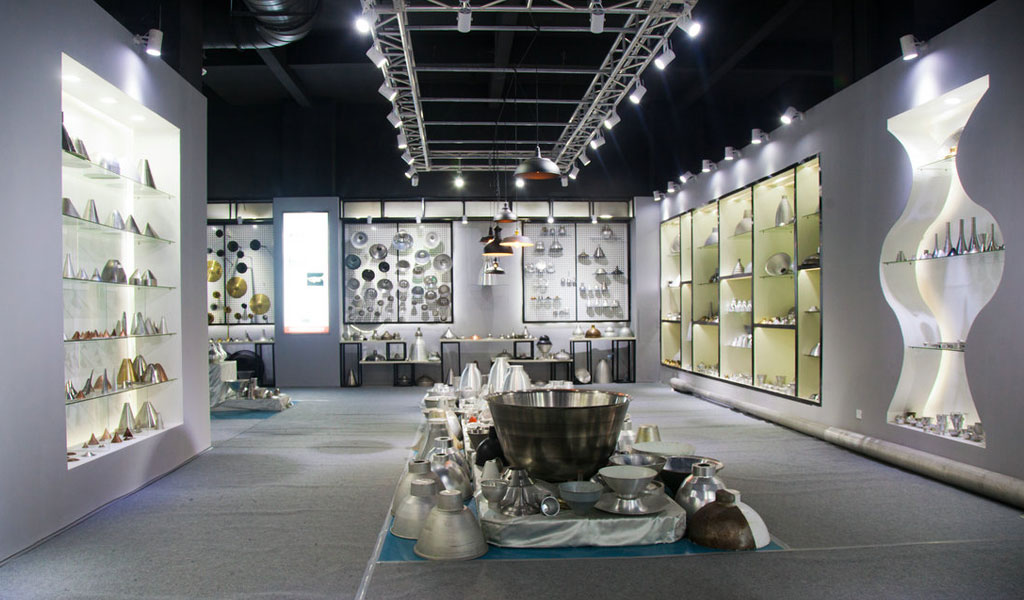
At BE-CU China Metal Spinning company, we make the most of our equipment while monitoring signs of excess wear and stress. In addition, we look into newer, modern equipment and invest in those that can support or increase our manufacturing capabilities. Our team is very mindful of our machines and tools, so we also routinely maintain them to ensure they don’t negatively impact your part’s quality and productivity.
Talk to us today about making a rapid prototype with our CNC metal spinning service. Get a direct quote by chatting with us here or request a free project review.
BE-CU China CNC Metal Spinning service include : CNC Metal Spinning,Metal Spinning Die,Laser Cutting, Tank Heads Spinning,Metal Hemispheres Spinning,Metal Cones Spinning,Metal Dish-Shaped Spinning,Metal Trumpet Spinning,Metal Venturi Spinning,Aluminum Spinning Products,Stainless Steel Spinning Products,Copper Spinning Products,Brass Spinning Products,Steel Spinning Product,Metal Spinnin LED Reflector,Metal Spinning Pressure Vessel,
